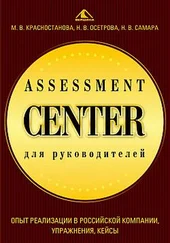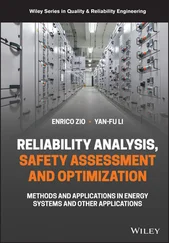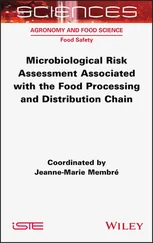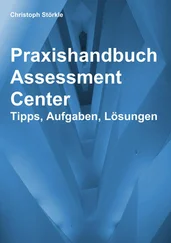3.2.3.2 Step 3.2: Define Specific and Representative Events
In this step, we have to be more careful about what we include as events to be analyzed further. From the (often unorganized) list of identified hazards and events, we should specify a set of specific initiating or hazardous events to form the backbone of the risk analysis. Now, the definitions introduced in Chapter 2help us in the screening process. We should not discard any hazards and events that are not included in the list of hazardous/initiating events, because they can be parts of accident scenarios or causes that we use in later steps in the risk assessment process.
From the generic lists, we may have identified “fire” as an event, but we now need to make this sufficiently specific, stating, for example, “fire in room X during daytime.” The specificity of the events must be balanced with the resources required to perform the analysis. More events typically require more time and resources to perform the analysis so we try to define representative events that can cover a range of more or less similar events.
In most cases, a screening of the identified events may be performed as part of this step. Events that are considered to have a very low probability of occurrence or are expected to have no or negligible consequences are usually screened out and not included for further analysis. This screening should be carefully documented.
3.2.3.3 Step 3.3: Identify Causes of Events
The purpose of the causal analysis is to identify the causes of the hazardous or initiating events that have been identified. How “deep” into the causes we should go depends on a number of factors, including
How detailed is the analysis? The level of detail should be determined in step 1. A more detailed analysis requires that we go into more details on the causes.
What causes can be influenced by the decision‐makers? Causes outside what we can change are less relevant to study in detail except to help us design a robust system that can withstand or compensate for these causes.
Both technical, human, and organizational causes should be considered whenever relevant.
The causal analysis may form an important basis for the frequency analysis.
3.2.3.4 Step 3.4: Determine Frequencies of Events
This step is not a part of all risk analyses or may sometimes be performed in a simplified manner. In some cases, the risk analysis is purely qualitative and the description of causes from the causal analysis are then adequate as a description of risk, combined with a description of the consequences. In some cases, frequency or probability classes are used instead of assigning a numerical frequency to each event. Frequency classes may, for example, be specified as  /year,
/year,  per year,
per year,  per year. Frequency classes are discussed in more detail in Chapter 6.
per year. Frequency classes are discussed in more detail in Chapter 6.
Assigning frequencies or probabilities may be a difficult task in risk analysis. The data that we have available for this purpose are from the past, whereas we are trying to predict the future. Therefore, the application of data relies on a number of assumptions. The simplest assumption to make (and perhaps most common) is to assume that the past is representative also for the future. Very often, this is not the case, and we need to make assumptions about how we believe that changes in technology and operating context may affect the frequencies or probabilities. Data and data analysis is discussed in more detail in Chapter 9.
In practice, a screening process is conducted also as part of this step. If we conclude that the frequency or probability is very small, we may choose to eliminate the event from further analysis.
3.2.4 Step 4: Develop Accident Scenarios and Describe Consequences
The structure of step 4 is shown in Figure 3.7. Several analytical methods are available for this step and are described in Chapter 12.
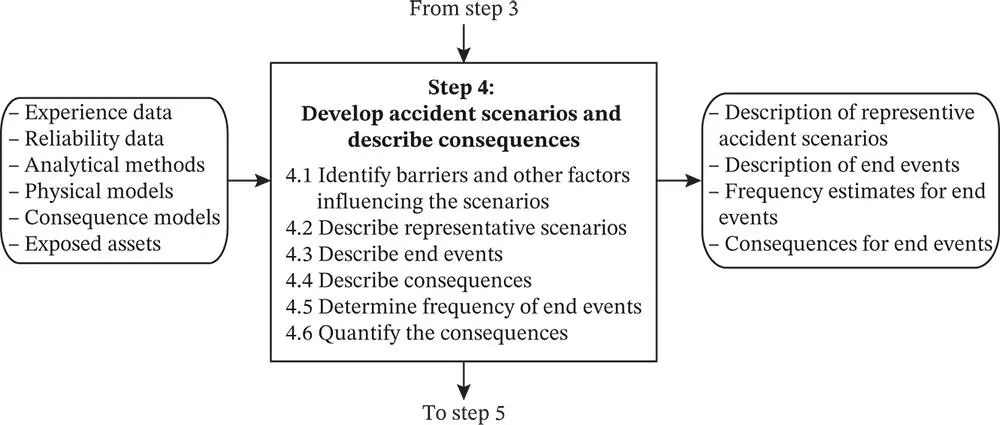 Figure 3.7Step 4: Develop accident scenarios and describe consequences.
Figure 3.7Step 4: Develop accident scenarios and describe consequences.
3.2.4.1 Step 4.1: Identify Barriers and Other Factors Influencing the Scenarios
During the initial hazard identification, we have most likely identified a number of events and enabling conditions that influence how an accident scenario develops. In this step, we need to identify any barriers that contribute to control the risk by (i) stopping the accident scenario from developing into an accident or (ii) reducing the consequences. There may also be other factors influencing the scenarios, negatively or positively, that should be included in the accident scenarios to be defined in step 4.2.
3.2.4.2 Step 4.2: Describe Representative Scenarios
From the information assembled in steps 3.1 and 4.1, it is now possible to start describing accident scenarios that may occur, starting from the initiating events. This is usually a chain of events, but may also include enabling conditions and events that influence the probability that scenarios develop positively or negatively.
How far the scenarios should be developed is difficult to define precisely. In most cases, the scenarios are stopped when the immediate effects and consequences have occurred (e.g. when a collision has occurred or a fire has been extinguished). In cases where there also may be long‐term effects on assets, this may be too early.
The scenarios are important to gain a qualitative understanding of what can happen, but they are also important as a basis for quantification of the probability/frequency of the end events.
In many cases, there can be more or less endless numbers of scenarios. We therefore need to select and describe representative sets of accident scenarios. The representative set should, as far as possible, be general enough to cover all relevant accident scenarios. At the same time, the scenarios must also be specific enough to be useful for understanding how risk can be managed through adding more risk reduction measures.
3.2.4.3 Step 4.3: Describe End Events
The final event in each accident scenario is often called end event and is of particular significance. The end event defines the end of the development of the accident scenario and determines where we decide what the consequences are. The end events can be described qualitatively, and in practice, it may be necessary to specify the whole chain of events leading to the end event to fully understand what the consequences are.
3.2.4.4 Step 4.4: Describe Consequences
Based on the scenarios and events, the consequences to the different assets considered should be described qualitatively.
3.2.4.5 Step 4.5: Determine Frequency of End Events
The causal and frequency analysis determined the frequency/probability of the initiating event. Because the initiating event may develop through a series of possible accident scenarios into different end events, we also have to assign probabilities to the different scenarios that we have identified. This is in turn used to determine the frequency/probability of the end events.
In some simple methods, we do not assign probabilities to the scenarios, but use the probability of the initiating event directly in the risk analysis. This can pose some challenges for the risk analysis. We come back to this issue in Chapter 10.
Читать дальше
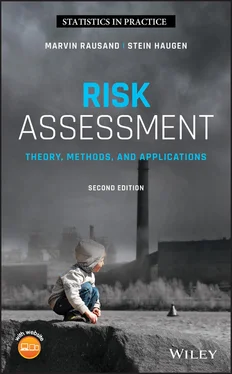
 /year,
/year,  per year,
per year,  per year. Frequency classes are discussed in more detail in Chapter 6.
per year. Frequency classes are discussed in more detail in Chapter 6. Figure 3.7Step 4: Develop accident scenarios and describe consequences.
Figure 3.7Step 4: Develop accident scenarios and describe consequences.



